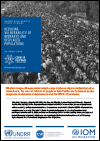Publications on Migrants
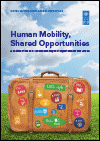

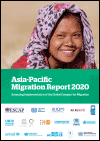
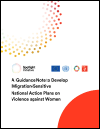
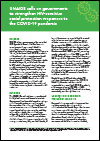
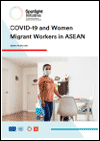
This brief explores the multi-dimensional impact on women migrant workers, highlighting that COVID-19 is not only a health crisis but also a crisis with detrimental effects on freedom from violence and harassment, employment, income, social protection, access to services, and access to justice.

The COVID-19 pandemic disproportionately affects women migrant workers across Asia and the Pacific, in particular those with irregular migration status. Concluding the four-part guidance note series, this paper focuses on the emerging impacts of the pandemic on women migrant workers and recommendations to support governments, donors, civil society organizations, employers and the private sector in addressing those impacts. Essentially, more assertive and collective efforts are needed to ensure migrant-inclusive and gender-responsive measures in preventing further spread of the virus.
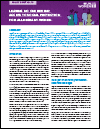
Social protection is a universal human right and a key element of the 2030 Agenda for Sustainable Development. While this right unequivocally applies to migrants, irrespective of migration status, migrant women in particular often remain excluded. Against this backdrop, this policy brief discusses the barriers that migrant women face in accessing social protection and provides recommendations for States to meet their obligation to overcome these, particularly in relation to health care, maternity protection and essential services for victims and survivors of violence.

Nepali women and girls are vulnerable to violence at the hands of their husbands and in-laws. The key drivers of women’s vulnerability to violence against women and girls (VAWG) in the migrant communities of Nepal include gender inequitable norms, the lower position of young married women in the family, poor spousal and in-law relations, and poverty. In this context, working with the family has great potential to reduce violence and improve the conditions of women and girls.






